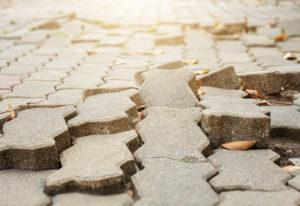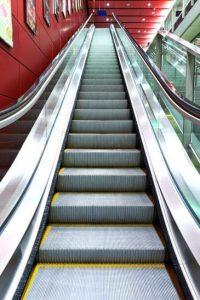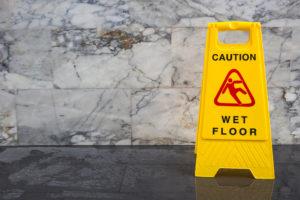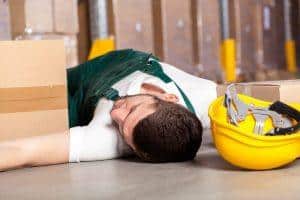
The most common type of premises liability claim, slip-and-fall claims generally are made against the associated insurance policy of the property owner on whose property the accident took place. However, who is liable if you slip and fall on a city sidewalk?
The answer to that question is that it depends on the state laws where you’re from, how quickly you file your claim, and your ability to prove negligence. If you have been injured in a slip-and-fall accident on a city sidewalk, the legal team from Morris Bart is available to answer the legal questions you have about your case through a free case evaluation.
How State Laws Handle Liability for City Sidewalks
According to the National Floor Safety Institute (NFSI), most slip-and-fall accidents resulting in injury or death occur from ground level — such as on sidewalks — rather than from elevation. Slip-and-fall accidents are particularly hazardous for the elderly population over age 65, due to declines in strength and vision. The most serious types of injuries resulting from slip-and-fall accidents are bone fractures including fractured hips, traumatic brain injury, or spinal cord injury.
Each state in the nation has its own laws pertaining to the responsibility of sidewalks. In some states, the responsibility for maintaining the sidewalk rests with the municipality where the sidewalk is located. In other states, the liability for maintaining the sidewalk belongs to the owner of the business or home that the sidewalk runs in front of.
Many states have a hybrid of both theories, with city agencies or property owners abutting the sidewalk where the defect is present only being liable for injuries caused by the sidewalk if they had reason to know there was a defect and failed to take action to mitigate the hazard.
For a free legal consultation, call 800-537-8185
When the Municipality Is Liable
In states where the upkeep of the sidewalk is the municipality’s responsibility, it only faces liability if the claimant can prove that the municipality knew or had reason to know that the sidewalk was defective. The type of evidence that can prove this includes past complaints or even past settlements made to other claimants who sustained injuries in the same location,
Your Time Limit on Claims Against a Municipality
It is often believed that it is impossible to sue the government. In reality, you can sue the government for many things, including injuries you sustained on public property. However, these claims must follow the municipality’s claims process, which generally provides only a short time to notify the proper department responsible for the condition of your intent to sue and a shortened deadline for filing your claim in court, as well.
If you believe that the city is responsible for the sidewalk defect that resulted in your slip-and-fall accident, you should speak with an experienced premises liability attorney right away in order to protect your right to seek compensation from the city through the civil court system.
When the Property Owner Is Liable
Property owners/ possessors are always liable for sidewalks or walkways that are on their property. The duty of care owed by the property owner in such situations is to regularly inspect the property for hazards that can cause injuries to guests. If defective conditions such as uneven or broken sidewalks are discovered, the property owner then has a further duty to either promptly repair the condition or provide a prominent warning of the defect in an area where passersby are certain to see it.
In cases involving the sidewalks that the property abuts, as previously mentioned, the property owner/possessor in some states has the responsibility of repairing known conditions. This is particularly true if the condition involves snow, ice, or debris such as leaves that make the area slippery to walk on and could easily be seen and quickly repaired by the property owner.
Click to contact our personal injury lawyers today
Evidence Needed to Prove a Sidewalk Slip-and-Fall Claim
If you are planning to seek compensation for injuries you sustained in a slip-and-fall on a city sidewalk, the type of evidence that can help prove your claim includes:
- Photos of the location where you fell that clearly depict the weather conditions and show the hazard.
- Photos of your clothing and visible injuries that you incurred in the accident.
- Documentation of any medical treatment you received for your injury.
- A copy of the report you made to the individual or entity who owned the property on or beside the defective sidewalk.
How an Attorney Can Assist You with Your Claim
Slip-and-fall accidents require an extensive amount of experience with the legal process and an understanding of the common defenses used in this type of claim. Additionally, your attorney should be well-versed in the needs of those who have been injured and have a willingness to fight for your right to compensation whether through a negotiated settlement or a court award.
One of the important services your premises liability attorney can provide for your slip-and-fall claim is a determination of liability and the insurance resources associated with the liable party that can be accessed to provide your compensation. This will determine your next steps, as claims against liable municipalities follow a different timeline.
If You Were Injured in a Sidewalk Slip-and-Fall, We Can Help
The accident attorneys at Morris Bart have been assisting the injured in Louisiana, Mississippi, Alabama, and Arkansas to obtain the compensation they need after being injured in an accident for decades now. As one of the largest personal injury law firms in the country, we pride ourselves on offering quality legal representation and responsiveness to the needs of our clients. For your free case evaluation, contact us online.
Questions?Call 800-537-8185
to find a Morris Bart office near you.





